
CBSE Class 11 Physics Notes Chapter 2: Any physics issue or idea starts with the real sense of measurement, which is defined in Notes of Physics Class 11 Chapter 2. A comparison of an object's physical property with a standard is the concept of measurement. The Unit and Measurement Class 11 Notes PDF provides in-depth information on all types of measurements, units, dimensions, and measurement mistakes.
The number of times a standard measure of a physical quantity is present in the object being measured is necessary in order to measure that physical quantity. For an accurate depiction of any quantity, our Unit and Measurement Class 11 Notes offers a thorough explanation of the common international units used worldwide.CBSE Class 11 Physics Notes Chapter 2 PDF
Measurements and Units for Class 11 All fundamental ideas and clarifications on measures, units, dimensions, and errors are covered in sufficient detail in the notes. A solid basis for the following chapters is laid by the physical quantity principles covered in Ch 2 Physics Class 11 Notes.CBSE Class 11 Physics Notes Chapter 2 PDF
CBSE Class 11 Physics Notes Chapter 2
An internationally recognised standard for measuring amounts is referred to as a unit. A measurement of a numerical quantity in a particular unit has been included. For base quantities (mass, length, etc.), the units are known as Fundamental unitfs. The units that result from the combining of basic units are called derived units. A System of Units is made up of both Fundamental and Derived units. Système Internationale d'Unites, or SI (International System of Units) as it is known in French, is a definition of a globally recognised system of units. It was created and suggested by the General Conference on Weights and Measures in 1971. The list of seven base units that SI mentioned is displayed in the table below. Accompanying it are two components. The two units for angles are radians, or rad, for plane angles, and steradians, or sr, for solid angles. These two have no dimensions.
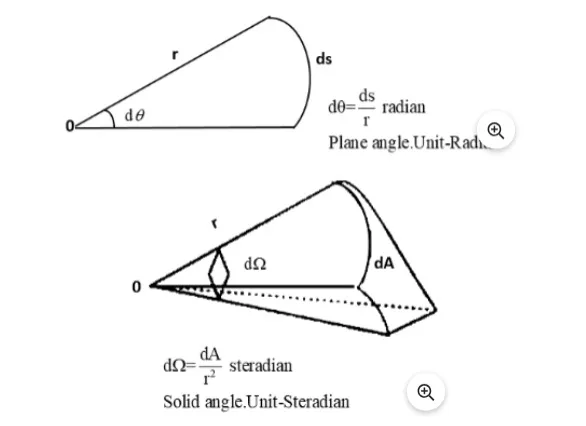
Parallax Method-Measurement of large distances
The angle or semi-angle of inclination between two lines of sight is used to compute parallax, which is the displacement or difference in the apparent position of a body observed along those two lines. The distance between the two points of view is referred to as the foundation.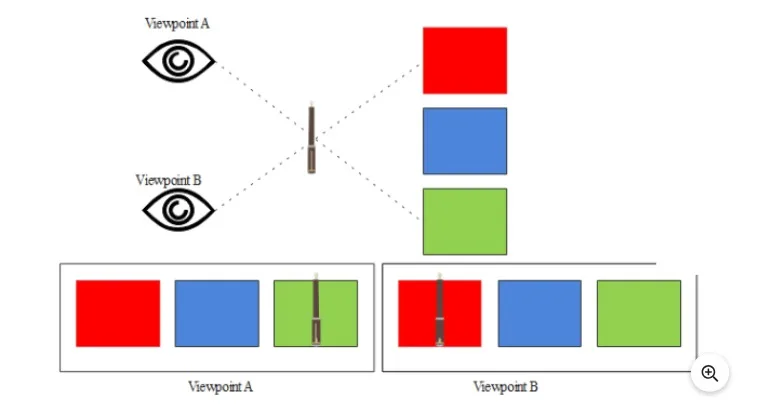
Calculating the distance of a planet using parallax method
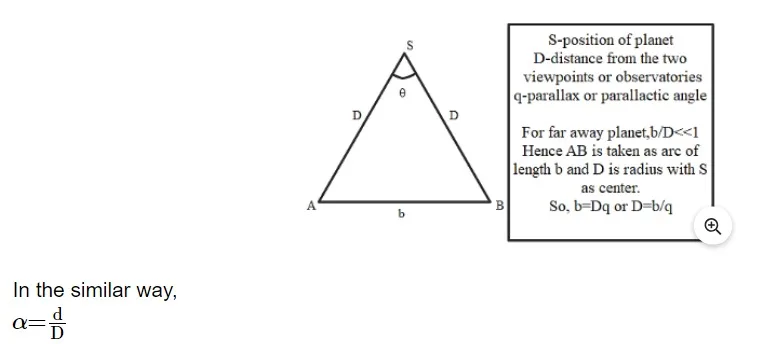 where d is the planet's diameter and α is the planet's angular size (the angle subtended by d at Earth). When viewing two diametrically opposed points on the planet, the angle between the telescope's direction and the points is represented by α.
where d is the planet's diameter and α is the planet's angular size (the angle subtended by d at Earth). When viewing two diametrically opposed points on the planet, the angle between the telescope's direction and the points is represented by α.
Measuring very small distances
Electron microscopes will be used to measure lengths as small as a molecule. Among them will be electron beams that are subject to magnetic and electric fields. The resolution of electron microscopes will be 0.6 Angstroms, or Å. When we employ tunnelling microscopy, which is a technique used to resolve atoms and molecules, we may estimate the size of molecules. estimating the Oleic acid molecule's size. Oleic acid has a large molecular size of around 10−9 m, resulting in a soapy liquid state. The steps listed below are utilised to ascertain a molecule's size: Next, sprinkle lycopodium powder over a trough's water's surface while retaining one drop of the aforesaid solution. The oleic acid in the solution will spread across the water in the form of a circular molecule thick layer.
Use the computations below to get the diameter of the circular film above.
Next, sprinkle lycopodium powder over a trough's water's surface while retaining one drop of the aforesaid solution. The oleic acid in the solution will spread across the water in the form of a circular molecule thick layer.
Use the computations below to get the diameter of the circular film above.

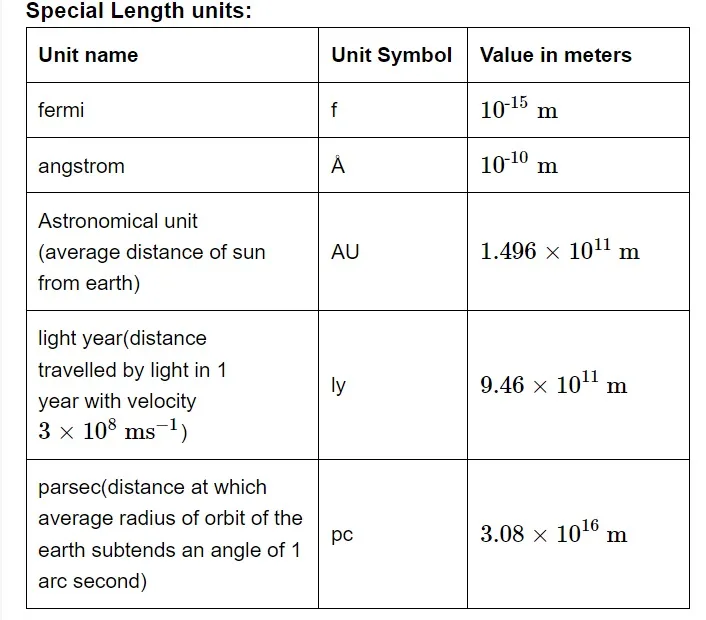
Combinations of Errors
The sum of the mistakes in the two values will be helpful in identifying and forecasting the errors in the resultant amount when a quantity depends on two or more other quantities. There are several ways to go about this. Think about two quantities. The values of A and B are A ±ΔA and B ± ΔB. Assume that Z is the outcome and that the error ΔZ results from the combination of A and B.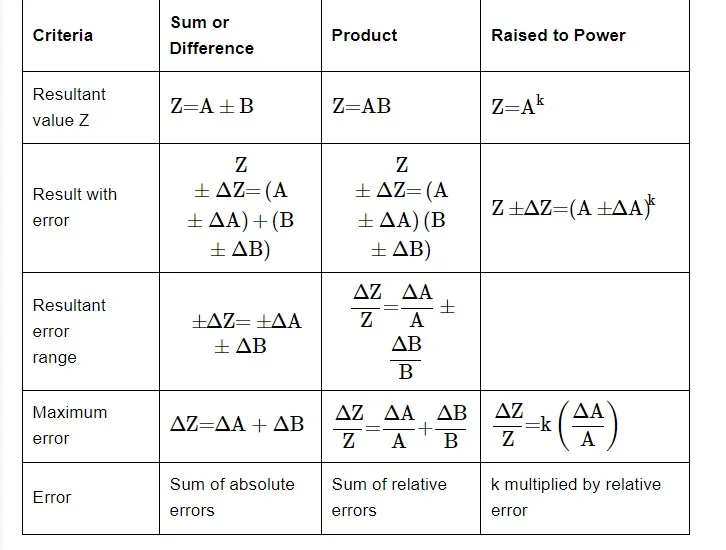
Significant Figures
Each measurement yields an output in the form of a number with both certain and uncertain digits. Significant digits or significant figures are defined as reliable digits appended to the first uncertain digit. This illustrates how measurement precision varies with the least number of measuring instruments utilised. A pendulum with an oscillation period of 1.62 seconds can be used as an example. In this case, 1 and 6 will be dependable, whereas 2 is not sure. Therefore, there will be three significant figures in the measured value.Rules for the determination of number of significant figures
Every digit that is not zero will be important. Every zero in between two non-zero digits will have significance regardless of the decimal place. For values less than 1, zeroes are not regarded as important when they come before or after non-zero digits and the decimal. If there is a zero before the decimal place for these numbers, it will never matter. If a number has no decimal places, the trailing zeros have no significance. When a number has a decimal place, the trailing zeros are important.Cautions for removing ambiguities in calculating number of significant figures
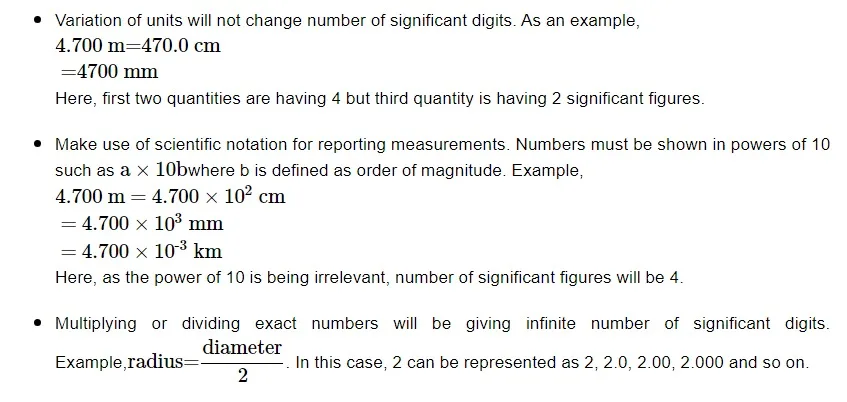
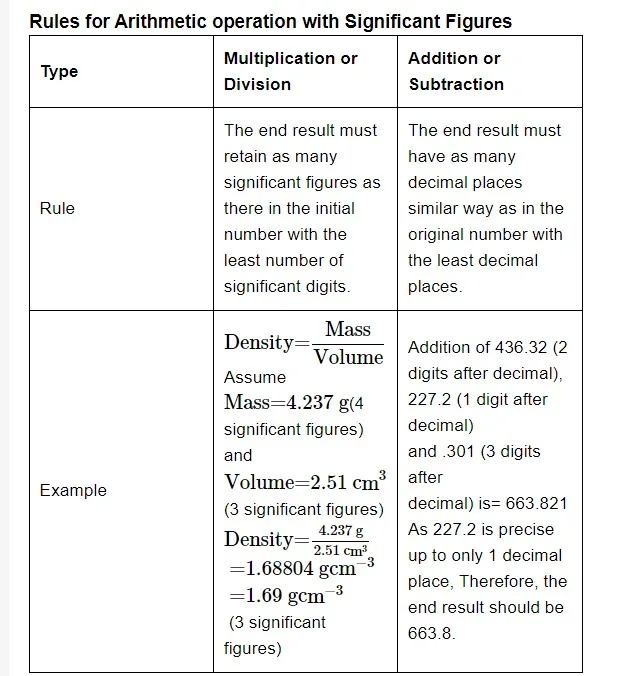
Benefits of CBSE Class 11 Physics Notes Chapter 2
Units and Measurements Class 11 Notes provide students with an invaluable tool for understanding the basic principles of physics. Students can improve their ability to solve problems and build a solid foundation in physics by using our notes, which will enable them to succeed in their academic endeavours. The following details clarify the significance of units and measurements in Class 11 Notes (PDF Download): The Class 11 Physics Chapter 2 Notes hereoffer a thorough grasp of the basic ideas in physics. Precision measurements, dimensional analysis, and SI units are only a few of the subjects covered in these notes. To help with conceptual clarity and theory application, they provide lucid explanations and examples. Our notes simplify difficult material into manageable summaries, making revision and exam prep more efficient. Students can develop their problem-solving abilities and grasp the material with the help of Class 11 Units and Measurements Notes, setting a solid basis for their future physics studies.CBSE Class 11 Physics Notes Chapter 2 FAQs
Why is 11th physics so tough?
The Class 11 Physics syllabus is tough. It's filled with complex concepts, tricky formulas, and problems that could challenge even Einstein. From waves and optics to magnetism and electricity, it's a diverse and demanding journey.
Which chapter is very easy in physics class 11?
Unit and measurement is the most basic chapter of class11 physics. Although kinematics which includes motion in one dimension and motion in two dimensions are also quite easy,it is more conceptual and also new class11 students are familiar with these chapters.
Which branch of physics is difficult?
Quantum mechanics is deemed the hardest part of physics.
🔥 Trending Blogs
Talk to a counsellorHave doubts? Our support team will be happy to assist you!

Check out these Related Articles
Free Learning Resources
PW Books
Notes (Class 10-12)
PW Study Materials
Notes (Class 6-9)
Ncert Solutions
Govt Exams
Class 6th to 12th Online Courses
Govt Job Exams Courses
UPSC Coaching
Defence Exam Coaching
Gate Exam Coaching
Other Exams
Know about Physics Wallah
Physics Wallah is an Indian edtech platform that provides accessible & comprehensive learning experiences to students from Class 6th to postgraduate level. We also provide extensive NCERT solutions, sample paper, NEET, JEE Mains, BITSAT previous year papers & more such resources to students. Physics Wallah also caters to over 3.5 million registered students and over 78 lakh+ Youtube subscribers with 4.8 rating on its app.
We Stand Out because
We provide students with intensive courses with India’s qualified & experienced faculties & mentors. PW strives to make the learning experience comprehensive and accessible for students of all sections of society. We believe in empowering every single student who couldn't dream of a good career in engineering and medical field earlier.
Our Key Focus Areas
Physics Wallah's main focus is to make the learning experience as economical as possible for all students. With our affordable courses like Lakshya, Udaan and Arjuna and many others, we have been able to provide a platform for lakhs of aspirants. From providing Chemistry, Maths, Physics formula to giving e-books of eminent authors like RD Sharma, RS Aggarwal and Lakhmir Singh, PW focuses on every single student's need for preparation.
What Makes Us Different
Physics Wallah strives to develop a comprehensive pedagogical structure for students, where they get a state-of-the-art learning experience with study material and resources. Apart from catering students preparing for JEE Mains and NEET, PW also provides study material for each state board like Uttar Pradesh, Bihar, and others
Copyright © 2025 Physicswallah Limited All rights reserved.
Get App









